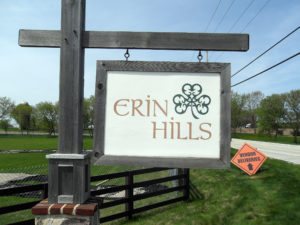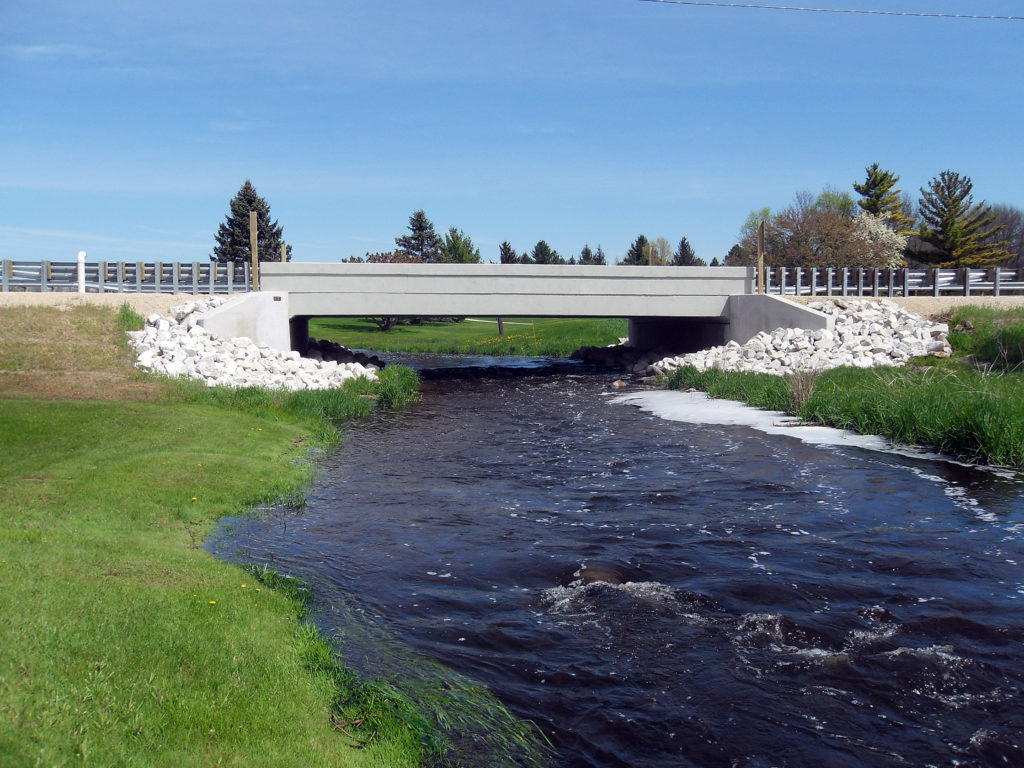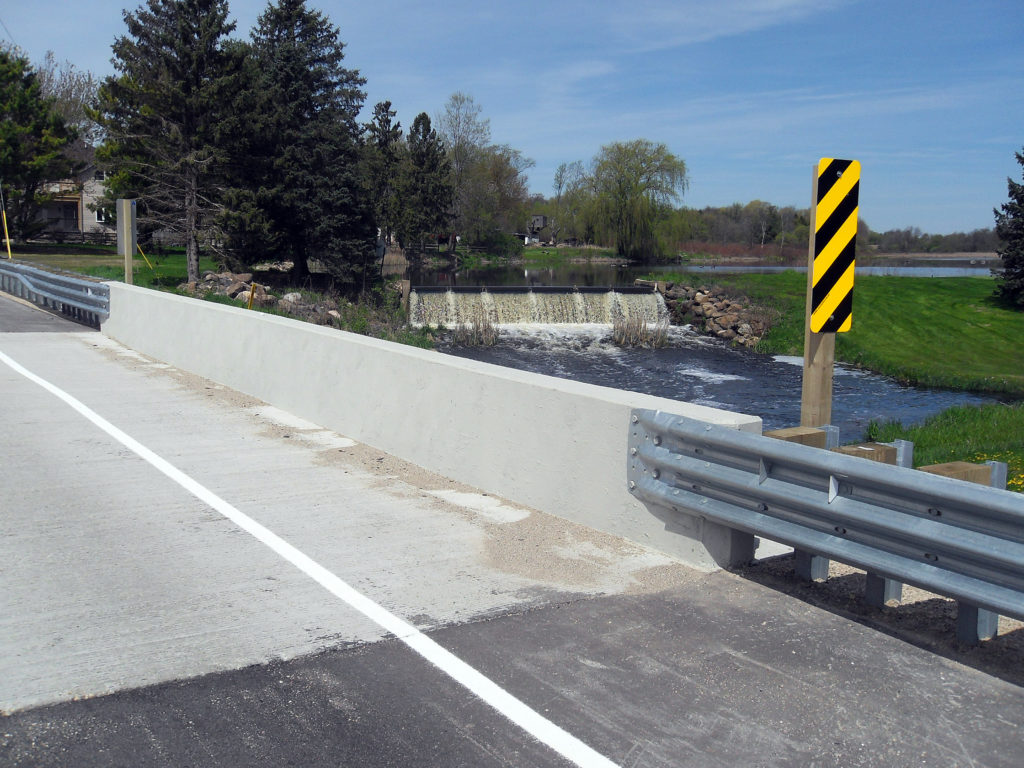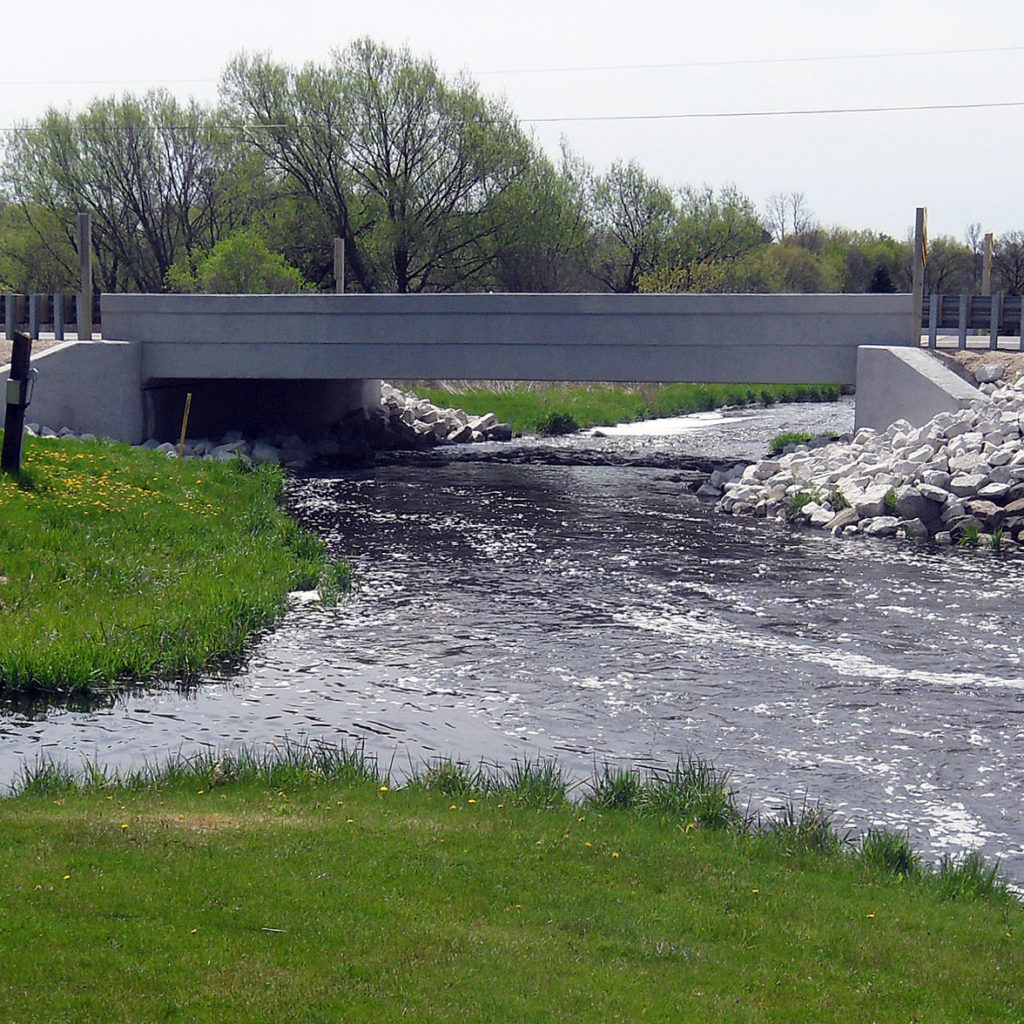Par for the Course: Keeping the Bridge Open to the Open
 In the golf world this week, all roads lead to the U.S. Open Championship at Erin Hills in Dodge County, Wisconsin.
In the golf world this week, all roads lead to the U.S. Open Championship at Erin Hills in Dodge County, Wisconsin.
 This high-caliber course is 35 miles northwest of Milwaukee, 115 miles from Chicago, 116 miles south of Green Bay, and 67 miles east of Madison. It’s not quite in the middle of nowhere, but as one Texas golfer noted, “it’s out there.”
This high-caliber course is 35 miles northwest of Milwaukee, 115 miles from Chicago, 116 miles south of Green Bay, and 67 miles east of Madison. It’s not quite in the middle of nowhere, but as one Texas golfer noted, “it’s out there.”
It’s crucial that players and fans can reach the course easily, which is why the Dodge County Highway Department accelerated the design and reconstruction of one of its highway bridges to avoid any road closure during this busy week.
 The bridge that carries Highway O over the Ashippun River is about 5 miles southwest of Erin Hills. Highway O is one of the main access routes to the tournament. The project design was awarded to Ayres Associates in late 2014, and the initial schedule called for completing the design by the end of 2016 to allow for construction in spring 2017. But that schedule posed too great a risk of the required detour being in place during the U.S. Open. So Ayres Associates’ structural and transportation engineers were asked to accelerate the schedule to allow the new bridge to be constructed in fall 2016.
The bridge that carries Highway O over the Ashippun River is about 5 miles southwest of Erin Hills. Highway O is one of the main access routes to the tournament. The project design was awarded to Ayres Associates in late 2014, and the initial schedule called for completing the design by the end of 2016 to allow for construction in spring 2017. But that schedule posed too great a risk of the required detour being in place during the U.S. Open. So Ayres Associates’ structural and transportation engineers were asked to accelerate the schedule to allow the new bridge to be constructed in fall 2016.
Most bridge replacements are on a two-year schedule – usually 18 months for design and any necessary real estate acquisition and an additional six months to let the project for bidding and for construction to be completed. For Highway O the design schedule was compressed to just a year.
 Compressed schedules take more communication with regulatory agencies – including the U.S. Army Corps of Engineers, U.S. Fish & Wildlife Service, state departments of natural resources and transportation and others – and a solid understanding of what needs to get done and when. Having good relationships with those agencies is critical.
Compressed schedules take more communication with regulatory agencies – including the U.S. Army Corps of Engineers, U.S. Fish & Wildlife Service, state departments of natural resources and transportation and others – and a solid understanding of what needs to get done and when. Having good relationships with those agencies is critical.
A traditional project schedule generally assumes a month or more for regulators to review an environmental document, design study report, or other required submittals. A tight schedule means cutting that review time down to a week or two. To keep the process moving, engineers talk through any complicated project components with the reviewers before the submittal. That way when the reviewers get the report, they either know what to expect or the issues already have been resolved.
In a typical project schedule, reports are submitted in linear order – report A is approved before submitting a draft of report B. On a compressed schedule, engineers may stack reports, submitting drafts of reports A and B at the same time, even though A has to be approved before B. They also may ask agencies to review a report even if all the attachments aren’t yet available to be included. For example, a required concurrence letter may be promised but not yet available.
 The key to making a compressed schedule work is regular, frequent communication all around – with regulatory agencies and clients alike. It also helps to work with a consultant that completes the permits correctly the first time. (Ayres Associates has designed nearly 1,500 bridges – that’s valuable experience for meeting any schedule or permitting regulation.)
The key to making a compressed schedule work is regular, frequent communication all around – with regulatory agencies and clients alike. It also helps to work with a consultant that completes the permits correctly the first time. (Ayres Associates has designed nearly 1,500 bridges – that’s valuable experience for meeting any schedule or permitting regulation.)
If you’re traveling to Erin Hills this week, be sure to enjoy the natural beauty and dependable infrastructure you’ll find in Dodge County. And if you don’t have tickets to the Open, never fear – you probably can get a round in at Deertrak Golf Club, right next to that brand spanking new bridge on Highway O.
For more information about our services and projects, visit our structural and transportation engineering pages.

Post a comment: